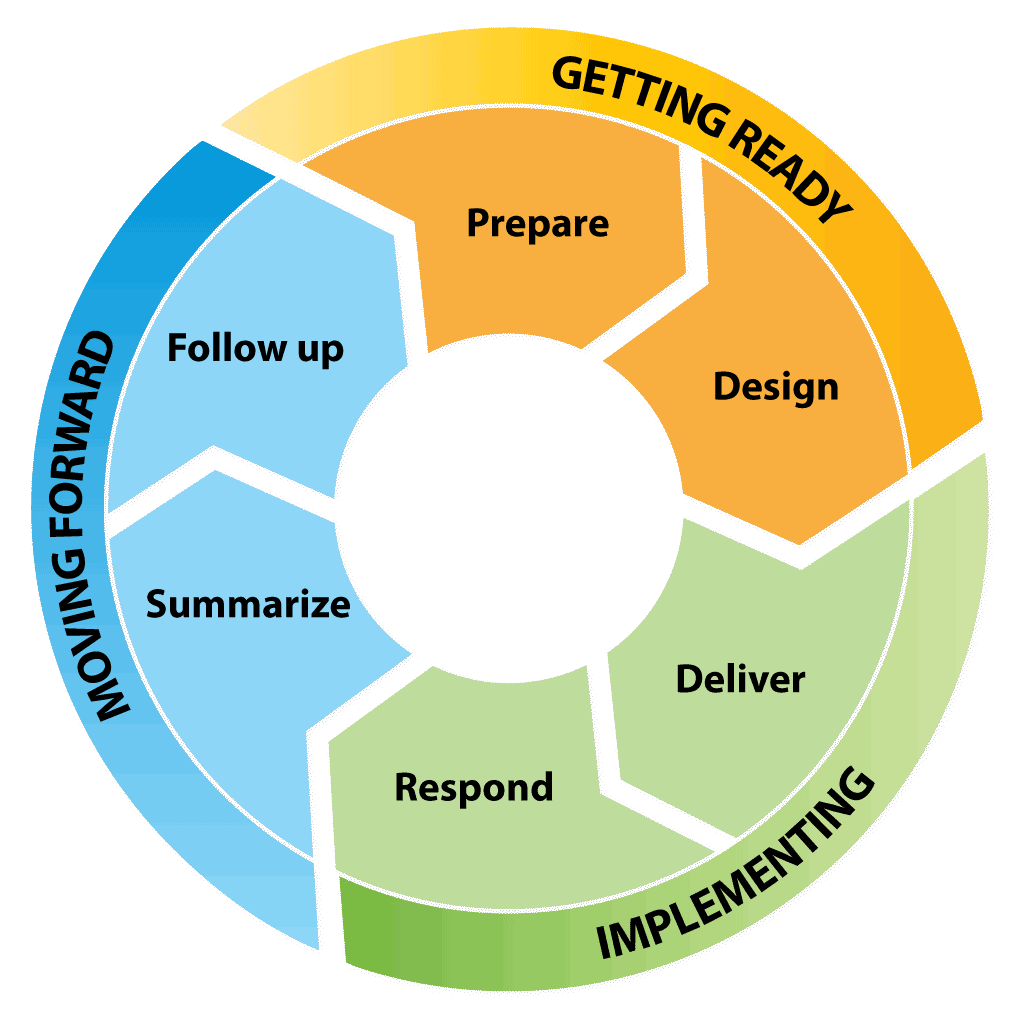
We often worry about conversations where we have to deliver some tough news that others will perceive as bad news. It might involve an impending organizational change, performance issue, a career transition or perhaps limited growth opportunities. In reality, most bad news is not news; the rumor mill in organizations works very efficiently; the person has most likely sensed something is going on. However, until people are confronted by the direct impact of the news for themselves, they may believe that exceptions will be made, or that there is still time to stop or reverse it.
Although it may seem uncomfortable to the messenger, it’s necessary for most of us to first experience the bad part of the news before we can move to acceptance and possibly see the part that might be beneficial. As messengers of the difficult communication, we may wish to manage the negative reaction as quickly as possible and move on to the positive, thus tending to ignore or deny the other’s feelings of fear, loss, and/or sadness. We may sugarcoat and soften the message or even exaggerate the effect.
"Talking Straight" means giving people straightforward and accurate information with empathy, but also with the expectation that they are adults who can handle it. Straight talk is respectful of the other person and provides the other person with important information. It is realistic and supportive at the same time, facilitating the other in taking action. In this session, we focus on the skills for delivering difficult information and on responding to the receiver in a constructive way. We practice a process for helping others hear, deal with, and respond to information that they may perceive negatively.

At the completion of this course, participants will have gained the practical skills to:
This course is ideal for individual contributors who want to improve their communication skills and project leaders, managers, team members, internal consultants, or anyone responsible for delivering “bad news” or critical feedback.
There are no prerequisites for this course.
You will receive a course workbook containing a copy of the presentation slides.
Overview and Introductions
Talking Straight Model
Planning a "Straight Talk" Conversation
Giving Feedback
Listening
Feedback Practice: Practice your plan from your fieldwork practice
Common Responses to Feedback: Activity to create guidelines for feedback reactions, dos, and don'ts
Summary, Close, and Action Planning |
Copyright © Barnes & Conti Associates, Inc. All Rights Reserved.
Course ID: BC-5310
Course Level: Beginner
Duration: 1 day
Sessions not found.